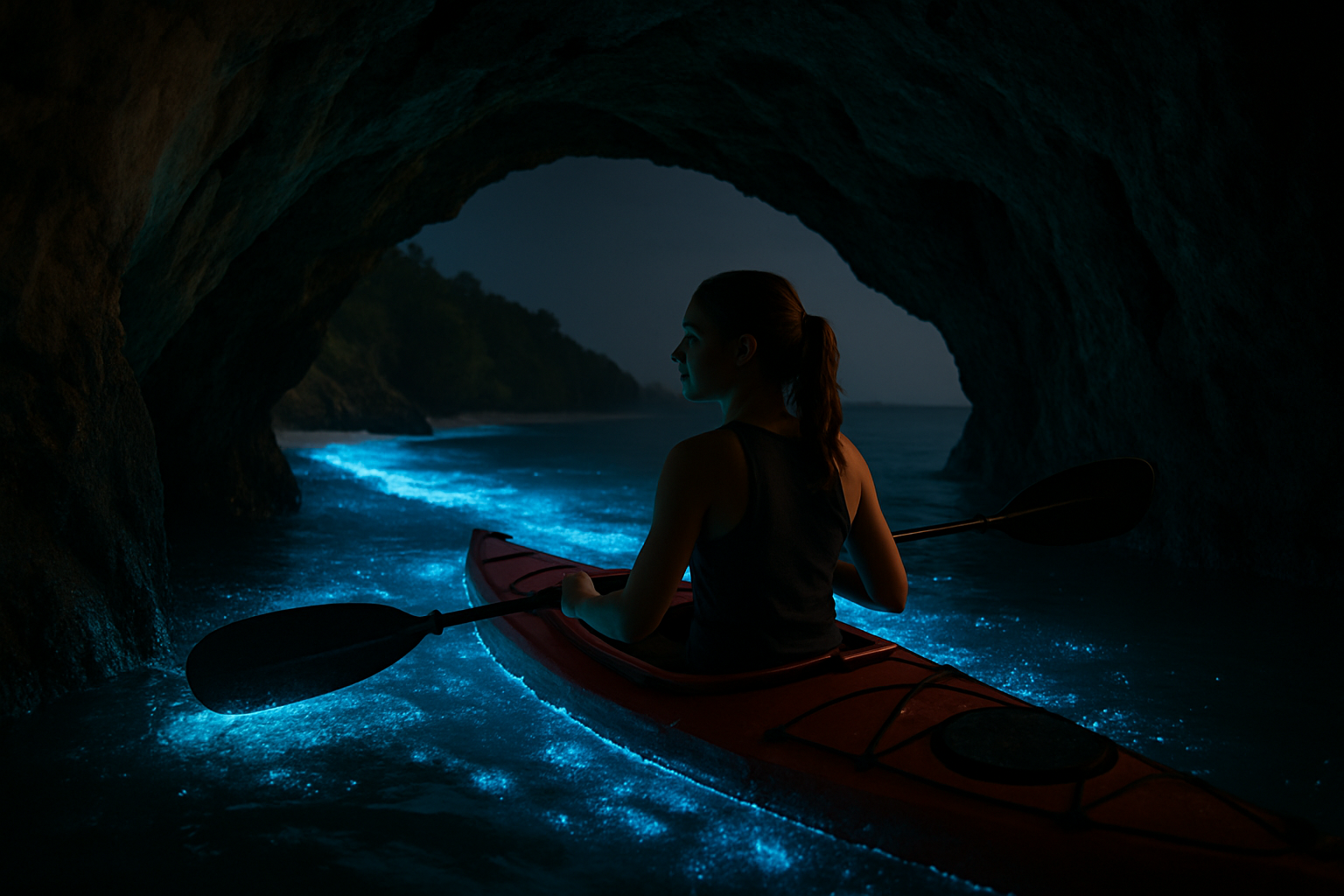Beyond the Beaten Path: Embracing Bioluminescent Tourism
Discover the enchanting world of bioluminescent tourism, where nature's light show takes center stage. This emerging travel trend invites adventurers to witness the mesmerizing glow of living organisms in their natural habitats. From glowing plankton-filled beaches to illuminated cave systems, bioluminescent tourism offers a unique and awe-inspiring way to experience the planet's hidden wonders.

A Brief History of Bioluminescent Tourism
While bioluminescent organisms have existed for millions of years, their appeal as a tourist attraction is relatively recent. In the past few decades, as awareness of these natural light shows has grown, so too has the interest in experiencing them firsthand. Early bioluminescent tourism began in places like Puerto Rico’s Mosquito Bay and Jamaica’s Luminous Lagoon, where visitors could witness the phenomenon in easily accessible locations.
Popular Bioluminescent Destinations
Today, bioluminescent tourism has expanded to numerous locations worldwide, each offering a unique experience. In the Maldives, travelers can swim in bioluminescent waters that light up with each movement. Tasmania’s Preservation Bay is known for its sea sparkle, created by billions of tiny marine organisms. The Waitomo Glowworm Caves in New Zealand offer a different kind of bioluminescent experience, with thousands of glowworms illuminating the cave ceilings like a starry night sky.
The Rise of Bioluminescent Activities
As interest in this phenomenon has grown, so too have the variety of activities available to tourists. Night kayaking tours in bioluminescent bays have become increasingly popular, allowing visitors to glide through glowing waters and create their own light show with each paddle stroke. Some locations offer guided snorkeling or swimming experiences, while others provide glass-bottom boat tours for those who prefer to stay dry while observing the spectacle below.
Environmental Considerations and Sustainable Practices
While bioluminescent tourism offers a unique way to connect with nature, it’s crucial to consider the environmental impact of these activities. Increased tourism can potentially disrupt the delicate ecosystems where bioluminescent organisms thrive. Many tour operators are now implementing sustainable practices, such as limiting group sizes, using eco-friendly equipment, and educating visitors about the importance of preserving these natural wonders.
The Future of Bioluminescent Tourism
As technology advances and research into bioluminescent organisms continues, the future of this niche travel trend looks bright. Scientists are exploring ways to create artificial bioluminescence, which could potentially lead to new, sustainable lighting solutions and eco-friendly tourist attractions. Additionally, ongoing discoveries of new bioluminescent species and locations may open up even more opportunities for travelers to experience this magical phenomenon in different parts of the world.
Illuminating Facts and Travel Tips
-
Best viewing conditions:
• Dark, moonless nights
• Warm water temperatures
• Minimal light pollution
-
Peak seasons vary by location:
• Caribbean: Year-round, with slight variations
• Maldives: July to February
• Tasmania: Spring and summer months
-
Photography tips:
• Use a tripod for stability
• Opt for long exposure shots
• Experiment with underwater cameras
-
Respect the environment:
• Avoid using chemical insect repellents before entering the water
• Don’t touch or collect bioluminescent organisms
• Follow local guidelines and restrictions
As bioluminescent tourism continues to gain popularity, it offers travelers a chance to witness one of nature’s most mesmerizing displays. By embracing this unique form of exploration, adventurers can create unforgettable memories while gaining a deeper appreciation for the wonders of the natural world. As we look to the future of travel, bioluminescent experiences stand out as a shining example of how sustainable tourism can illuminate both our planet and our understanding of it.





